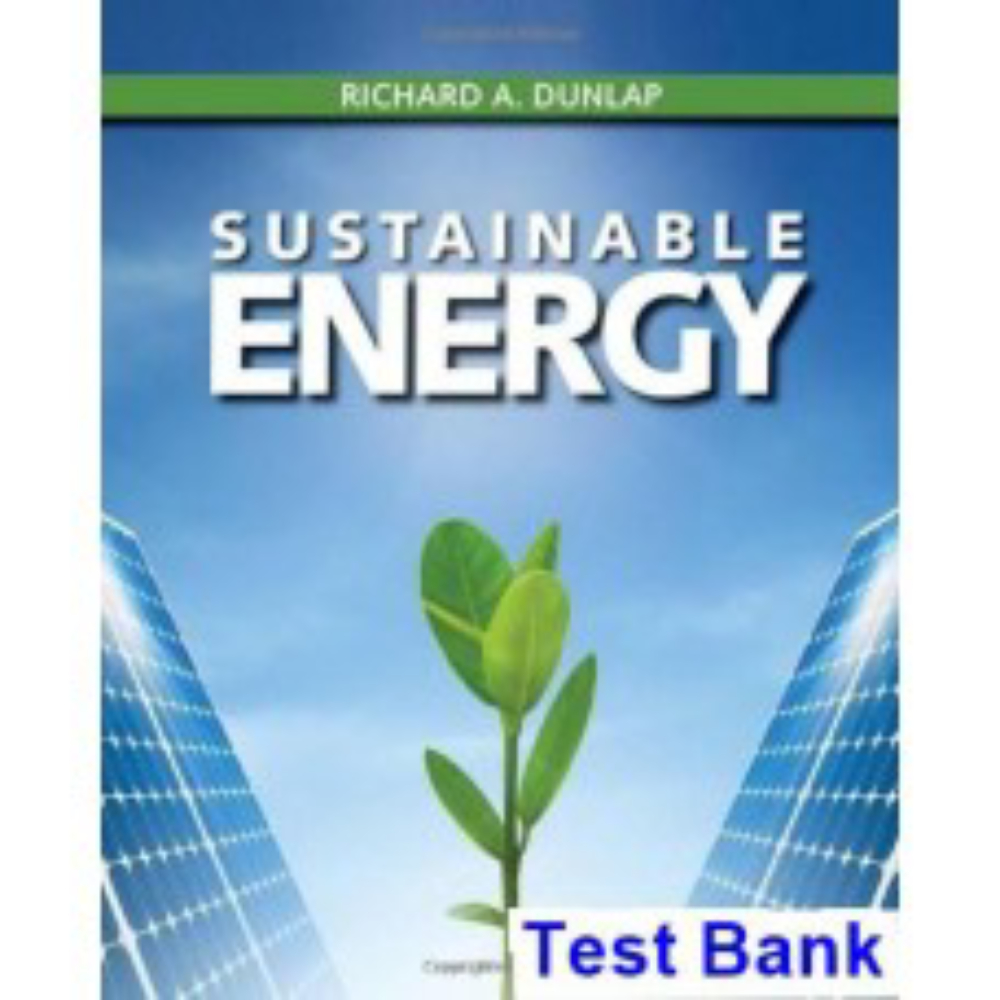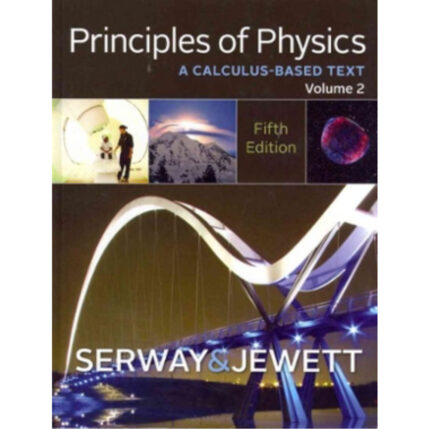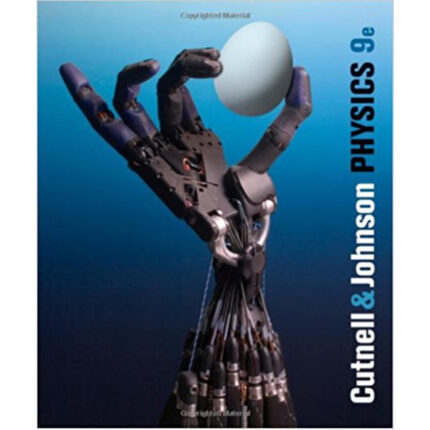Sustainable Energy (1st Edition) – Richard Dunlap
Chapter 11
Hydroelectric Energy
11.1 Water falls through a head of 100 m and drives a turbine to generate electricity. The total overall efficiency of electricity generation is 85%. What flow rate of water (liters per second) is needed to generate 1 kWe?
Solution The kinetic energy of the water is
E = mgh
and the power generated from a flow rate measured in mass per unit time (m/t) is
P = (m/t)gh
At a net 85% efficiency the electrical power is
P = (0.85) × (m/t)gh
Solving this for (m/t) gives
(m/t) = P/[(0.85) × gh]
Substituting values from the problem gives
(m/t) = (1000 W)/[(0.85) × (9.8 m/s2) × (100 m)] = 1.2 kg/s or 1.2 liters per second.
11.2 The Hoover Dam has a head of 180 m and a maximum output capacity of 2080 MWe. If the generator efficiency is 90% what is the flow rate in m/s at maximum capacity?
Solution At 90% efficiency the total mechanical energy supplied to the turbines is
(2080 MWe)/(0.9) = 2311 MW.
Since E = mgh and power is P = E/t = mgh/t then the flow rate is
(m/t) = P/(gh)
For the values given in this problem we find
(m/t) = (2.311 × 109 W)/[(9.8 m/s2) × (180 m)] 1.31 × 106 kg/s
As the density of water is 1000 kg/m3, the flow rate is
(1.31 × 106 kg/s)/(1000 kg/m3) = 1.31 × 103 m3/s
11.3 (a) Calculate the change in potential associated with 1 tonne of water changing elevation by 100 m (a typical head for a high hear hydroelectric facility).
(b) Calculate the velocity of 1 tonne of water flowing in a river that has kinetic energy equivalent to the energy in part (a). Express your answer in km/h to get a good feeling for the magnitude of this result.
Solution (a) The energy associated with water falling through a head of h is
E = mgh
For the conditions given above
E = (1000 kg) × (9.8 m/s2) × (100 m) = 980,000 J
(b) The kinetic energy associated with water flowing at a velocity v is
E = mv2/2
solving this expression for v gives
v = [2E/m]1/2
Substituting energy from above and a mass of 1000 kg into this expression gives
v = [(2 × 980,000 J)/(1000 kg)]1/2 = 44.3 m/s.
Converting this to km/h gives
(44.3 m/s) × (1 km/1000 m) × (3600 s/h) = 159 km/h
11.4 A community plans to develop a small scale hydroelectric facility. It is anticipated that the facility will supply electricity to 800 homes, where the average power consumption per home is 1.5 kW. The facility will utilize a river with a width of 10 m, a depth of 2.5 m and an average flow rate of 2 m/s. The head associated with the dam is 6 m and the generator efficiency is 87%. Is this a reasonable plan?
Solution The potential energy is given by
E = mgh
The power generated by the falling water is
P = (m/t)gh
The flow rate in kg/s is given as
(10 m) × (2.5 m) × (2 m/s) × (1000 kg/m3) = 50,000 kg/s.
Thus the power generated at 87% efficiency is
P = (0.87) × (50,000 kg/s) × (9.8 m/s2) × (6 m) = 2.56 × 106 W = 2.56 MWe
The electrical requirements for the community is
(800 homes) × (1.5×103 W/home) = 1.2 × 106 W = 1.2 MWe
So the hydroelectric facility is sufficient to meet the average electricity need for the community.
11.5 An electric pump operating at 90% efficiency is used to pump water from a lake to a reservoir at a height of 200 m above the lake. If electricity costs $0.11 per kWh, what is the cost of transporting 1 tonne of water to the reservoir?
Solution The energy required is equal to the difference in the potential associated with the water at the two different elevations. Thus
E = mgh
At 90% efficiency the electrical energy is
E = (1000 kg) × (9.8 m/s2) × (200 m)/(0.90) = 2.18 × 106 J
Converting this to kWh gives
(2.18 × 106 W s) × (1 kW/1000 W) × (1 h/3600 s) = 0.61 kWh
At a cost of $0.11/kWh the total cost is
(0.61 kWh) × ($0.11/kWh) = $0.067













Reviews
There are no reviews yet.